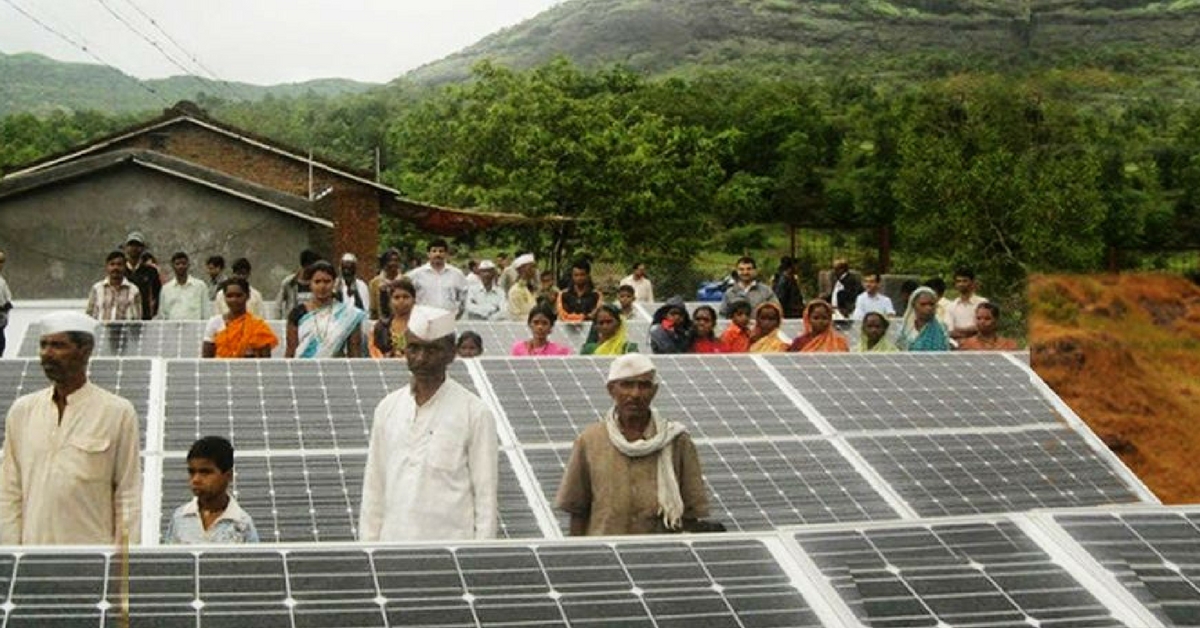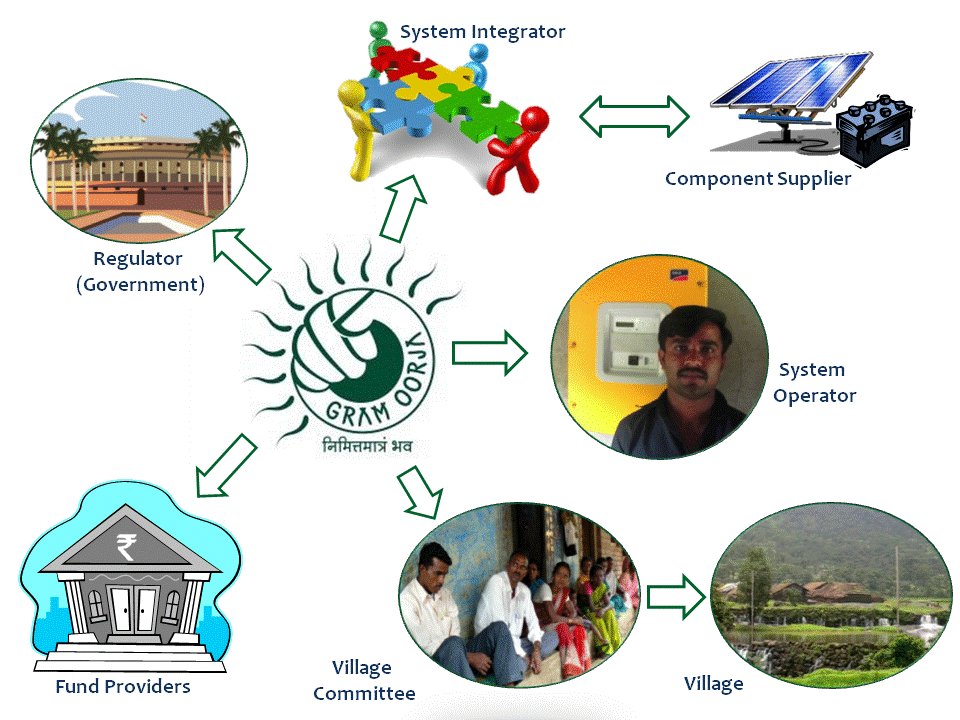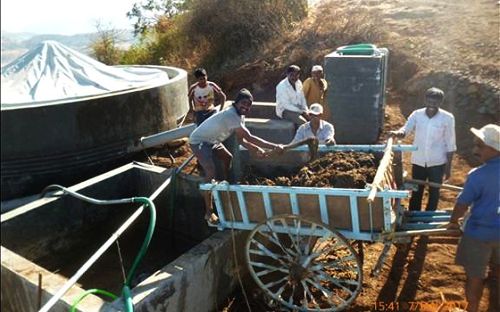TBI Blogs: How a Unique & Replicable Solution Lit up the Remotest Corners of Rural Maharashtra!
Gram Oorja created a rural micro-grid with hybrid power sources funded by corporate charity to help bring power to remote rural areas.

The power crisis in India has become a chronic one, affecting both industries in urban areas and farming communities in rural areas. However, this problem is more acute in rural areas due to their remote inaccessible locations. It is extremely difficult to transport grid power to distant villages as power wastage drastically increases with the length of the electric lines, due to transmission and distribution losses. Infrequent, unstable, or absolutely no electricity supply to rural areas is one of the challenges in the power sector that India needs to address in order to work towards becoming a fully developed country.
Gram Oorja, a social enterprise based in Pune, seriously pondered about this crisis. Remote villages are inaccessible, so there is a higher cost in laying power lines. Villagers are poor, so they cannot pay power bills. Government schemes are ineffective since power supply is always in deficit. They felt that corporate CSR programmes can fund such economically unviable projects, but villagers tend to misuse any equipment given to them in charity.
Further, one solution like solar power cannot provide power throughout the day.

The answer was found in micro power grids managed by local enterprises. If a village produces its own power, distributes it to households, and collects revenue to be sustainable, that would be a better model for rural electrification. So the Gram Oorja team of Anshuman Lath, Sameer Nair, Prasad Kulkarni, and Rahul Singh created an interesting model of corporate-social partnership that could solve this peculiar problem. They created a micro grid with hybrid power sources with funding from corporate charity funds.
The first village chosen for intervention was Darewadi, a picturesque hamlet nestled in the Sahyadri Mountains in Maharashtra. Darewadi was a tiny remote hamlet of just 39 households and 220 people, 140 km. from Pune, and 2 km. away from a motorable road. Gram Oorja convinced Bosch Solar Energy AG to fund this pilot project to establish a business model that works efficiently, and is sustainable as well. Shakti Foundation was the nodal NGO that provided consultation and guidance.
So Gram Oorja set up a decentralized solar power plant with a capacity of 9.4 kilowatts in 2012. The company also set up a biogas unit as backup power provider when sunlight was not available. Further, a central battery bank and an inverter managed power fluctuations, leading to better load management. Maintenance of this system is done centrally, so that it is cost-effective.
In order to ensure that villagers have a sense of ownership of the project, Gram Oorja encouraged them to participate in setting up the unit and managing it every day. It also created a village trust in Darewadi to supply power to households and collect bills every month. Apart from electrifying households, the micro-grid also provides power to a flour grinding mill and two water pumps.
The village trust manages these, depositing their revenue in a bank account as a corpus fund.

The Darewadi model of Build-Operate-Transfer proved beyond doubt that a hybrid micro-grid can function in a decentralized manner without any government intervention. Emboldened by this result, Gram Oorja soon rolled out this model in more than 10 villages in rural Maharashtra. Apart from power grids, the enterprise has also set up a biogas cooking grid in Kolvan village in Mulshi, Pune district. Each of these micro-grid projects cost around ₹2.5-3 million, which power bill revenues compensate over a period of 5-7 years.
Recently, Gram Oorja tied up with Bank of America to provide light and electricity through two solar micro-grid projects for the villagers of Humranpada and Vanvasipada. These projects catered to the energy need of 63 households and the enterprise successfully completed them in May 2016. Further, the bank helped Gram Oorja in implementing three solar PV-based micro-grid projects. These set up in Rangubeli Panchayat under the Dharni Tehshil in November 2016 and March 2017.
The 30.42 kW micro-grid now successfully provides electricity for lighting and power to over 140 households in the villages.

Gram Oorja has also implemented a biogas cooking grid at Gawaliwada for 14 households as a demonstration project. Gawaliwada is a village in the Mulshi block of Pune district, where dairy farming is the main occupation.
At present, the Gram Oorja micro-grid has an installed capacity of 45.7 kW, serving 230 households across 10 villages. This is courtesy charity foundations who have funded the company. Prominent contributors include Bosch Solar, Sir Dorab Tata Trust, ICICI Bank, Rotary Club, and Grundfos Foundation. The Build-Operate-Transfer model has been successful in numerous mega infrastructure projects, hence proving to be a great solution. Now the big question is – why can’t we implement this model to create micro-grids for providing power to faraway villages?
This case study was prepared by Ecoideaz, a repository of interesting innovations in clean technology and renewable energy that are emerging across India. Visit the website for more stories on environmental change and impact.
Like this story? Or have something to share? Write to us: [email protected], or connect with us on Facebook and Twitter.
NEW: Click here to get positive news on WhatsApp!
If you found our stories insightful, informative, or even just enjoyable, we invite you to consider making a voluntary payment to support the work we do at The Better India. Your contribution helps us continue producing quality content that educates, inspires, and drives positive change.
Choose one of the payment options below for your contribution-
By paying for the stories you value, you directly contribute to sustaining our efforts focused on making a difference in the world. Together, let’s ensure that impactful stories continue to be told and shared, enriching lives and communities alike.
Thank you for your support. Here are some frequently asked questions you might find helpful to know why you are contributing?


This story made me
-
97
-
121
-
89
-
167













